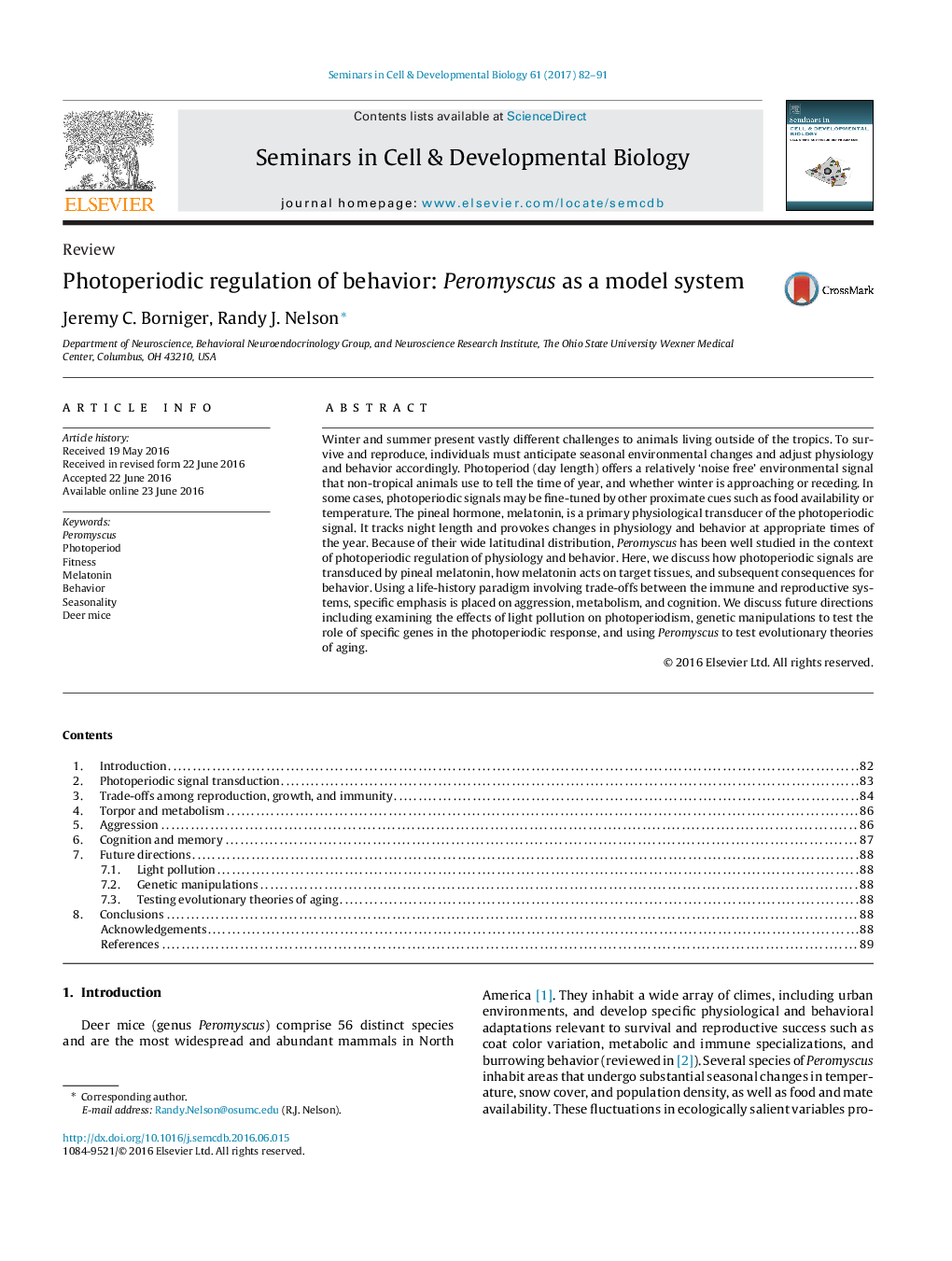| کد مقاله | کد نشریه | سال انتشار | مقاله انگلیسی | نسخه تمام متن |
|---|---|---|---|---|
| 5534864 | 1551362 | 2017 | 10 صفحه PDF | دانلود رایگان |

Winter and summer present vastly different challenges to animals living outside of the tropics. To survive and reproduce, individuals must anticipate seasonal environmental changes and adjust physiology and behavior accordingly. Photoperiod (day length) offers a relatively 'noise free' environmental signal that non-tropical animals use to tell the time of year, and whether winter is approaching or receding. In some cases, photoperiodic signals may be fine-tuned by other proximate cues such as food availability or temperature. The pineal hormone, melatonin, is a primary physiological transducer of the photoperiodic signal. It tracks night length and provokes changes in physiology and behavior at appropriate times of the year. Because of their wide latitudinal distribution, Peromyscus has been well studied in the context of photoperiodic regulation of physiology and behavior. Here, we discuss how photoperiodic signals are transduced by pineal melatonin, how melatonin acts on target tissues, and subsequent consequences for behavior. Using a life-history paradigm involving trade-offs between the immune and reproductive systems, specific emphasis is placed on aggression, metabolism, and cognition. We discuss future directions including examining the effects of light pollution on photoperiodism, genetic manipulations to test the role of specific genes in the photoperiodic response, and using Peromyscus to test evolutionary theories of aging.
Journal: Seminars in Cell & Developmental Biology - Volume 61, January 2017, Pages 82-91